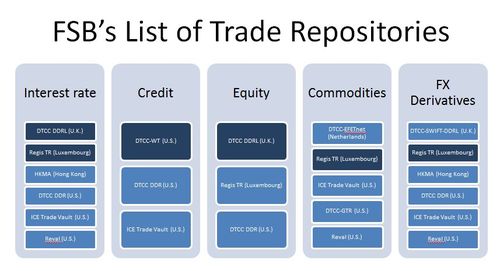
We had a great meeting at the Financial Services Club Clearing & Settlement Working Group (CAS-WG) plenary this month.
The CAS-WG is rocking and rolling forward, with four subject groups meeting regularly between the plenary meetings.
The four subject groups focus upon the challenges of clearing and settlement to deal with risk, regulations, standards and market infrastructure operations. Each group has nominated chairpersons:
- Risk Subject Group Chair: Paul Young, Associate Director for Business Risk Services, Grant Thornton
- Regulations Subject Group Chair: Rory Webster, Director with CapitalTrack Ltd
- Standards Subject Group Chair: Virginie O’Shea, Lead Analyst with Aite Group
- Market Infrastructure Subject Group Chair: Kathleen Tyson-Quah of Granularity Ltd
and are moving forward with focus.
At the July plenary each Chair gave an update of their group’s progress, along with two panel discussions in between.
The first panel discussion debated the merits of the European Market Infrastructure Regulation (EMIR) which is now in consultation with the European Securities and Markets Authority (ESMA) through 5th August, before ratification by the European Parliament at the end of September for implementation in 2013.
The second panel picked up on the ISO17442 standards for Legal Entity Identifiers (LEI). These are agreed for rollout from March 2013, and should make it far easier to track and monitor OTC Derivatives and other financial instruments as they move between different clearing systems.
This area was discussed in depth by:
- Graeme Austin, CEO of ISITC Europe
- James Whittle, convenor of ISO/TC 68 working group WG 6 responsible for the LEI standard (amongst many activities),
- Richard Young, Head of Regulatory Affairs for Securities Markets at SWIFT
- Virginie O’Shea, Analyst with the AITE Group and Chair of the CAS-WG Standards Subject Group

So I’ll start by writing up a little bit on this debate.
By way of background, Legal Entity Identification (LEI) is a new ISO standard (ISO17442) which will apply to all Financial Contracts from 2013, according to an agreement made by the G20 earlier this year.
This means there will be a single, universal standard for identifying all parties involved in a financial contract, and will make it far easier therefore to see counterparty positions should another crisis occur such as the Lehman’s crash.
The standard has been established by the U.S. Treasury's Office of Financial Research following proposals by the Depository Trust & Clearing Corporation (DTCC) and SWIFT.
SWIFT will act as the registration authority, acting on behalf of the International Organisation for Standardisation (ISO) to assign the ISO 17442 LEI standard. The DTCC will act as the facilities manager which will receive, review and publish entity information.
The development of a single global standard for LEIs is a key element in the broader effort to understand and monitor systemic risk across banks and capital markets.
Furthermore, LEIs will allow Trade Repositories to keep a single record of a financial instrument, which will make it far easier to sort out a liquidity or counterparty collapse.
For a comprehensive background of the development of this standard, you can checkout this document: download LEI timeline of events.
Interestingly, in Virginie’s update on standards, she had picked up this chart from the Financial Stability Board’s list of recognised and approved trade repositories:

It shows the DTCC’s strength, which some are calling a monopoly, and a lot of discussion took place about concentration risk when so much dependency is placed upon one CCP.
On the other hand, some argued that concentration of monitoring is a good thing, as the more centralised a single record of risk, the easier it is to manage.
The general discussion however was the feasibility of implementing a single global standard for LEI’s.
James was adamant that this has been agreed and is being rolled out, no matter what other standards are mooted.
In the earlier panel:
- Robin Poynder, Head of Regulation, Marketplaces, Thomson Reuters
- Peter Randall, CEO, Equiduct
- Kathleen Tyson-Quah, CEO, Granularity Ltd
discussed EMIR, the European Market Infrastructure Regulation.
EMIR has three objectives.
First, to reduce counterparty risks by:
- defining the framework for the application of the clearing obligation;
- specifying the risk mitigation techniques for OTC derivatives not centrally cleared; and
- laying down the requirements for the application of exemptions to non-financial counterparties and intragroup transactions
Second, to create safe and resilient central counterparty systems (CCPs) by developing a comprehensive set of organisational, conduct of business and prudential requirements for CCPs.
Third, to increase transparency by:
- specifying the details of derivatives transactions that need to be reported to trade repositories;
- defining the trade repositories’ data to be made available to relevant authorities; and
- setting the information to be provided to ESMA for the authorisation and supervision of trade repositories.
The text of EMIR was issued on 25th June 2012 for consultation, and the consultation will close on 5th August. At this point it moves into Parliamentary submission for full EU endorsement on 30th September 2012.
That’s a rapid cycle regulation and led to a lengthy dialogue around the effectiveness of the rapid cycle consultation process taking process around EMIR, and whether with Basel III, Dodd-Frank, the LIBOR crisis and other issues, the regulatory framework was being too rushed and fragmented or whether it could actually work.
In particularly the whole notion of transparency was questioned as to whether it was a good or bad thing. Peter Randall was particularly dismissive, describing it as being like an airline security system. The idea of a secure airline is one where all passengers fly naked. You know you’re safe as everyone can see what everyone else is carrying with full transparency. However, there wouldn’t be many passengers.
That is the fear for the impact of EMIR: that it creates transparency but all trading and liquidity disappears.
Robin Poynder made the position clear when he said that you may not like the regulatory framework, but the regulators are pushing through their changes whether the markets like them or not, and are even willing to see markets collapse if that’s what it takes to make them effective.
In other words, whether liquidity is there or not after the regulatory process, they really don’t care as long as the markets are safe.
Kathleen responded by saying that this is more likely to result in a flight from the markets, where these regulations force full transparency and movements to other geographies. What that means in reality is that you see liquidity disappear in the markets where they are needed – Europe and America – leaving only higher risks for the pension funds and corporates trying to manage their collateral.
From the Subject Group updates, the main highlights were their progress in creating future agendas.

The Risk Subject Group was discussed by Shaun Cooke, and has four focus areas:
- Enterprise Risk Management (ERM);
- The calculation of complexity and the increasing reliance on quantitative analysis to manage risk;
- A “liquidity famine” as banks and many of their clients are being forced to reserve increased levels of capital which could lead to an asset scarcity; and
- Issues around the holding of deposit insurances and collateral, as this could lead to increasing moral hazards.
The aim is to develop these areas into working papers and recommended best practices to share across the Subject Groups and other interested parties.
The Regulations Subject Group update came from nominated Chair Rory Webster, a Director with trade repository CapitalTrack Ltd.
The Subject Group is working in two key areas today:
- to inform and educate the marketplace and all institutions affected by EMIR on what it means and how it might impact their businesses; and
- lobbying the regulatory authorities to ensure EMIR is not a single conversation from the regulators but one that is two-way with all parties impacted included in the dialogue.
In particular, the group has initially focused upon EMIR and how it affects non-financial counterparties: will they be caught up or caught out by the regulation?
Bearing in mind the short-term focus for input to the consultation process by 5th August, the Subject Group asked for all input to be sent to the CAS-WG Chair by 2nd August 2012 to ensure our views are represented effectively to ESMA.
The group has also drawn up a matrix of regulations and how they impact different market functions, which is available from group co-chair Greg Caldwell of aSource Global Ltd if required.
The Standards Subject Group has focused upon trade repositories and the DTCC, and their slides – compiled by Standards Subject Group Chair Virginie O’Shea, Lead Analyst with Aite Group – can be seen below (from Slide 15):
The main activities of this group are to:
- highlight work that is currently on-going within the industry around data standards and market practices in the post-trade space
- identify the common points of interest/pain within these groups and facilitate communication across groups (buy-side/sell-side etc) – reduce duplicative work
- examine how all of this work will impact the clearing and settlement lifecycle as a whole – are we pushing risk further down the process?
With the aim to:
- track industry standards and market practices progress as a “living document”
- identify areas of common interest
- map to clearing and settlement lifecycle – where are groups missing a trick?
- discover which data standards are currently being used by the incumbent market infrastructures
The focus areas of the group include:
- new data standards – LEI, UPI, USI, UTI etc
- messaging standards – FIX, ISO, FpML etc
- market practices for C&S process- allocation, confirmation, affirmation, settlement , low tech clients, reconciliation
- regulatory influence – which pieces of regulation can we have a material impact upon?
- points of interaction between clients and firms – how do we change downstream issues? Can standardise internally but point of entry remains a problem
- cultural issues internally – raising the profile of these standards issues for C-level
- global dynamics – are we on the same page?
And the Group will identify:
- which pieces of regulation can be influenced?
- where are market practices lacking? Review common areas of focus across working groups
- what can be learned from other markets?
- how do we make post-trade teams’ lives easier?
In their on-going meetings.

Last, but not least, the Market Infrastructure Subject Group chaired by Kathleen Tyson-Quah of Granularity Ltd, are looking at the models for market complexity and are creating their own map of these structures to avoid any surprises.
The model the Group has developed will track the harmonisation of regulations and standard, and identify any overlaps or conflicts these create in the market infrastructures.
This is something I have advocated for a while now: we need a clear map of how the changes to system, structures, standards and regulations relate to each other.
Price formation is also on the group’s agenda, as the current LIBOR crisis will expand how pricing is set. Historically, prices have been set using mark-to-market reference rates, but self-certifying reference rates for derivatives pricing will now be called into question and change demanded. What will this mean for markets?
The group also recognises that there are 20 new CCPs being built today, with six in London alone. Does this mean too much concentration risk? It certainly means that there are changes to the way CCPs are capitalised.
Finally, the group is reviewing the impact of the new rules for clearing and settlement announced in April, when CPSS-IOSCO released three reports:
- a report entitled Principles for financial market infrastructures;
- a consultation paper on an assessment methodology for these new standards; and
- a consultation paper on a disclosure framework for the standards.
The new principles are designed to ensure that the infrastructure supporting global financial markets is robust and well placed to withstand financial shocks, with the new rules applicable to all systemically important payment systems, central securities depositories, securities settlement systems, central counterparties and trade repositories (collectively “financial market infrastructures” or FMIs).
These FMIs collectively clear, settle and record transactions in financial markets.
As mentioned, the Group’s deliverable will be a model that maps out all such changes, and makes clear the implications.
So there you have it.
Four Subject Groups and two Plenary Panels.
The Subject Groups will continue to meet through the summer and the next plenary meeting will be in September.
If you’re interested in joining in, just let me know.
Chris M Skinner
Chris Skinner is best known as an independent commentator on the financial markets through his blog, TheFinanser.com, as author of the bestselling book Digital Bank, and Chair of the European networking forum the Financial Services Club. He has been voted one of the most influential people in banking by The Financial Brand (as well as one of the best blogs), a FinTech Titan (Next Bank), one of the Fintech Leaders you need to follow (City AM, Deluxe and Jax Finance), as well as one of the Top 40 most influential people in financial technology by the Wall Street Journal's Financial News. To learn more click here...

